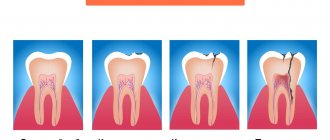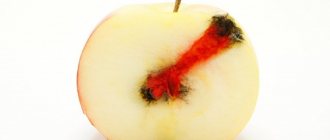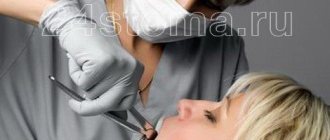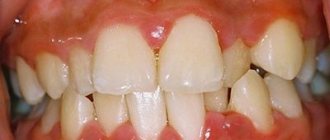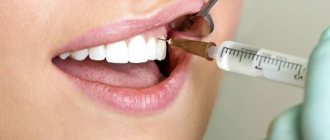Periodontitis in children is an inflammatory process in the tissues surrounding the root of the tooth. This disease is considered one of the complications of caries, although other causes are possible. The periodontium is the area located between the jaw and the roots of the teeth. It develops synchronously with their growth and is constantly changing until the time when permanent teeth are formed.
Treatment of periodontitis in primary teeth in children can be done at CELT dentistry. We offer competitive prices and comfortable conditions for young patients. Our pediatric dentists have extensive experience. Parents can be sure that visits to us will not be a real test for their kids. Treatment of periodontitis in children without pain and tears? This is possible in our clinic!
Consultation with a pediatric dentist (pedodontist) - RUB 1,000.
Apexification with the application of a temporary filling (1 channel) - 1,500 rubles.
Filling the root canals of baby teeth - 4,000 rubles.
Installation of insulating gasket "VITRIBOND" - 800 rubles.
At CELT you can get advice from a dental specialist.
- Cost of consultation with a pediatric dentist (pedodontist) – 1,000
Make an appointment
Causes of periodontitis in children
Dental periodontitis in children can occur due to a number of reasons:
- as a complication of caries that was not treated;
- as a consequence of improper treatment of caries complicated by pulpitis;
- due to chemical damage to the periodontium using canal sterilization agents;
- due to injuries to soft tissues and teeth during falls or accidents.
Why does periodontitis occur?
The most common causes of periodontitis are the following:
- caries in an advanced stage, which was not subjected to timely treatment;
- pulpitis in an advanced stage, lack of modern treatment;
- falls or blows to the jaw;
- poor-quality root canal treatment in the past;
- an inflammatory process that develops under the crown.
At risk of periodontitis is any patient who does not seek help from the clinic in time for caries. The problem often “pops up” in patients who do not attach importance to pain, and ordinary caries over time transforms into a more global pathology of the periodontium and canals.
Symptoms of periodontitis
Periodontitis can occur in acute or chronic form. Acute periodontitis in children is characterized by an acute onset and severe, constant, increasing pain. The pain is especially strong when pressing on the diseased tooth and when chewing on it. Other pronounced symptoms:
- swelling of the gums around the tooth;
- fever, weakness and nausea;
- enlarged lymph nodes and their pain.
Chronic periodontitis in children during periods when there are no exacerbations is practically asymptomatic. Pain can only appear when pressure is applied to the tooth or when the tooth comes into contact with something hot or cold. But besides this, other manifestations are possible:
- exacerbations with symptoms characteristic of acute periodontitis of primary teeth in children;
- formation of fistulas on the gums in the granulating form of the disease;
- drowsiness, fatigue, general weakness.
Causes and symptoms of childhood periodontitis
When a child is diagnosed with periodontitis, we are talking about severe inflammation of the soft tissues adjacent to the root of the tooth. The cause of the “trouble” is most often an infectious lesion occurring against the background of complicated caries. Often, childhood periodontitis develops in response to trauma to the frontal tooth (the pulp dies and the disease develops into a chronic form). Among other provocateurs of pathology:
- the child taking potent medications;
- damage to the child’s body by viruses;
- previous cold;
- untreated caries;
- malocclusion.
The vivid clinical picture of the pathology is associated with classic symptoms of inflammation, which result in a deterioration in the child’s health, an increase in body temperature, the concentration of leukocytes in the blood, and erythrocyte sedimentation. The inflammation does not fit into the framework - it quickly spreads to adjacent areas of soft tissue, negatively affecting the condition of the future molar.
Why is chronic periodontitis dangerous?
The acute form of periodontitis is characterized by pronounced pain, so parents immediately turn to the dentist. The chronic form of the disease occurs latently, and discomfort occurs mainly when eating. If you do not contact specialists in time, the inflammation may spread, and purulent bags will appear on the roots of the teeth. This can ultimately lead to tooth loss. Another unpleasant consequence is that the chronic form can re-exacerbate and lead to sinusitis or periostitis.
CELT pediatric dentists diagnose the chronic form of periodontitis with a preliminary X-ray examination. The selection of treatment is carried out taking into account the prevalence and severity of inflammatory processes, as well as the type of child’s teeth. If treatment is carried out on baby teeth, in order to carry out all the necessary manipulations in full, children are put to sleep using general anesthesia. In each individual case, the issue of pain relief is considered individually. We take into account not only the age of young patients, but also their health status, as well as the wishes of the parents.
Why treating childhood periodontitis at Stokos is the right decision
Our dentistry is where smiles begin. The task of our doctors is to confidently transfer your children into the adult world, which will accept them healthy, strong and full of strength. Among the enviable advantages of our center:
- only modern and safe materials that are used to restore baby and molar teeth;
- experienced pediatric dentists who are not used to working “according to a template” take into account the characteristics of your child’s body, guaranteeing maximum effectiveness of therapy;
- modern technology, high-precision equipment that simplifies the treatment process, ensures comfort and long-lasting results;
- nice atmosphere. Our doctors are on friendly terms with children. With us, your children forget about fear, pain, anxiety - they learn to care for their teeth with pleasure and conscious responsibility;
- loyal prices. We are for making dental care available to children.
Make an appointment with our doctor - don’t waste time, which is priceless!
Treatment of periodontitis in primary teeth
Treatment of periodontitis in primary teeth involves either their removal or the use of conservative techniques. The first is resorted to in extreme cases, since it can lead to such negative consequences as the development of malocclusions and slow development of the jaw. However, the affected tooth is a source of infection, which can affect the buds, and the consequences can be even more serious.
Treatment of periodontitis in children by removing the affected tooth is prescribed in the following cases:
- resorption of the diseased root by more than two-thirds of its length;
- severe mobility of the affected tooth;
- the process of changing to permanent teeth will begin in less than one year;
- conservative treatment does not give the desired result;
- development of sepsis;
- weakening of the child's body.
How periodontitis of primary teeth affects the rudiments of permanent teeth
The health of the molars directly depends on the condition and integrity of the primary teeth. Untimely treatment or ignoring periodontitis has a serious impact on the formation of rudiments and the formation of a permanent dentition. Dentists speak of three phases of molar development and the consequences of periodontitis:
- Formation of the tooth germ - the root is destroyed and dies.
- Crown formation – enamel hypoplasia or complete degradation and absence of a tooth.
- Root formation – a mobile permanent tooth grows, which is easily injured and quickly falls out.
Treatment of periodontitis in permanent teeth
Treatment of periodontitis in permanent teeth in children involves anti-inflammatory therapy. It requires an x-ray, the main purpose of which is to determine how well the child’s dental roots are formed. This is important because treatment of immature roots is much more difficult due to a number of anatomical features. They not only significantly complicate filling, but also increase the risk of medical errors. When applying a filling, calcium hydroxide is used. This material is the best for intra-root therapy for periodontitis. It has a pronounced bactericidal effect and creates a reliable barrier between the affected periodontal tissue and healthy tooth tissues.
Forms and types of periodontitis disease
Periodontitis is the fourth stage from the onset of caries formation. The process looks like this:
- First, hard tissues are affected by caries;
- Further, in the absence of timely treatment, superficial caries turns into deep caries, the destruction becomes more extensive;
- After this, pulpitis develops - inflammation of the internal tissues (pulp);
- In the absence of qualified treatment for pulpitis, the pathology gradually turns into periodontitis, inflammation of the canals and periodontal tissues.
Conservative treatment of periodontitis
CELT dentists widely use conservative methods for treating the symptoms of periodontitis in a child. If there is even the slightest opportunity to save a tooth without removing it, they do everything that depends on them. Endodontic treatment is carried out in a complex and involves the use of physiotherapy, which is an additional means to eliminate inflammatory processes. The procedures may be as follows:
- electrophoresis of antiseptic pharmacological drugs;
- laser therapy aimed at sterilizing tooth canals;
- phonophoresis of antiseptic agents using ultrasound.
The main treatment requires two visits, the first of which:
- the carious cavity is cleaned and softened dentin is removed from it;
- in order to expand the mouth of the canals, a hand instrument is used, after which the necrotic nerve is removed;
- expand and thoroughly clean the canal, rinse it with an antiseptic;
- the apical foramen is opened, which allows for exudation;
- the canal is filled with calcium hydroxide-based paste (if the tooth is permanent) or oil-based paste (if the tooth is milky).
After 5 - 10 days, during which the small patient is prescribed rinsing the mouth with antiseptics, along with taking antibiotics, a second visit is required. It provides for the following activities:
- Cleaning the dental canal and removing medicinal paste;
- Using an antiseptic solution for rinsing;
- Canal filling with gutta-percha, tooth filling.
Prevention
Like 99% of other dental pathologies, chronic periodontitis is easier to prevent than to treat. Enough:
- Maintain proper oral hygiene (brush your teeth twice a day, use floss, special rinses and irrigator).
- Stick to a proper diet. Less sweets, more fruits!
- Once every 3 months, go to the dentist for a preventive examination and professional hygiene.
- When the first complaints appear, do not delay your visit to the doctor and follow all recommendations.
The children's department of Megadent Clinic has excellent reviews. Each clinical case is considered individually. The little patient will be surrounded by care, found an approach and reassured. The treatment will take place without pain and tears. Call and sign up for a consultation!
Surgical treatment of periodontitis
Surgical treatment of chronic periodontitis in children may be required during periods of exacerbation or if the use of conservative methods does not produce the desired result. It is also used in cases of granuloma formation or canal obstruction. To do this, an operation is performed to resection the root apex. This is a complex surgical intervention that involves making an incision along the gum, peeling off the mucous membrane, and creating a small hole to gain access to the affected area. The dentist removes the root tip along with the granuloma, fills the free space with synthetic bone tissue and medicine, and sutures the wound. The technique is used only on permanent teeth; milk teeth are removed without preliminary manipulation.
Features of the course of chronic granulomatous periodontitis
This pathology develops only after the formation of roots and periodontium is complete. Growth to the sides and deeper into the granulation tissue is limited from the unaffected bone by a connective tissue capsule. Its fibers are extensively woven into the periodontium. Since the surrounding bone is dense, the lesion is clearly defined on x-ray.
The disease is also asymptomatic, with the exception of rare pain when pressing, and is accompanied by a change in tooth color. Probing and percussion do not cause pain, there is no reaction to temperature stimuli. The tooth may be intact or may have a carious cavity or filling.
X-ray signs
- Destruction of the cortical plate of the alveolus in the area of the apex of the roots of the damaged tooth.
- The clearing segment of the bone tissue has a round or oval shape and perfect outline, and its diameter does not exceed 4-5 mm.
Differential diagnosis
It is necessary to distinguish granulomatous periodontitis from the following diseases:
- deep chronic caries (treatment of caries in children is accompanied by pain during preparation of the enamel-dentin junction, reaction to cold);
- chronic gangrenous and fibrous pulpitis, complicated by focal periodontitis (sharp pain on probing);
- fibrous and granulating chronic periodontitis (diagnosed using x-ray);
- cystogranuloma and radicular cyst (in this case, the focus of destruction will be more than 5-8 mm).
How much does it cost to cure acute and chronic periodontitis in Moscow?
The cost of periodontitis treatment in Moscow clinics depends on the following factors:
- the number of canals that need treatment and filling;
- volume of mechanical interventions;
- the number of medications used in the treatment of a pathological tooth and in treatment in general;
- general condition of the oral cavity and possible pathologies that accompany periodontitis and require treatment;
- type of filling;
- the need for artistic restoration after filling;
- number of x-rays;
- type of anesthesia.
The estimated price for treatment of a 1-channel unit in Moscow clinics is from 7,500 rubles.
Treatment of a two-canal tooth costs approximately 9,500 rubles in Moscow.
Treatment of chronic periodontitis of a three-channel tooth will cost the patient from 12 thousand rubles.
Thus, treatment of periodontitis is a rather lengthy and expensive procedure that will require several visits to the clinic. To protect yourself and your loved ones from such difficulties, it is enough to simply visit the dentist’s office for preventive maintenance once every six months and brush your teeth regularly.
The 32 Dent clinic in Moscow specializes in complex treatment of periodontitis even in the most advanced cases. Sign up for an initial consultation with a specialist to receive qualified dental care on time, eliminating the risk of complications.
Diagnostics
It is very difficult to determine the presence of periodontitis in children. Since their dentofacial apparatus is still developing. This is also explained by difficulties in communication with a small patient. He is unable to describe his feelings in detail.
You can suspect periodontitis in a baby based on characteristic clinical signs:
- in acute periodontitis, pain intensifies from heat;
- in the chronic form there is no reaction to temperature;
- upon probing, a pain is detected at the site of granulation growth; if they have not formed, then it does not exist.
Radiography plays a leading role in the diagnosis of this disease.
It reveals:
- changes in the apical region of the root are detected (resolution of bone mass is noted);
- rarefaction of the substance of the root itself;
- granulomatous tissue is noted in the root;
- there are foci of destruction in the area of root separation and around them;
- destruction of the follicle of the permanent tooth is noted;
- the end part of the upper wall of the tooth germ is missing.
Thermal diagnostics and temperature tests are not carried out on children. The child cannot describe his feelings, so they are not informative.
Features of differential diagnosis
Granulating periodontitis must be recognized and distinguished from the following diseases:
- chronic form of moderate caries (at the time of preparation of enamel and dentin, the patient feels pain);
- chronic pulpitis of gangrenous and fibrous types (completely absent radiological changes, sharp pain reaction when probing the pulp horn);
- pulpitis, with a history of complicated focal periodontitis (severe pain and blood when probing the exposed pulp horn; X-ray shows destruction of bone tissue in the bifurcation area and in the apical zone of the roots).
Service cost
| Primary appointment (examination, consultation) with a dentist-therapist | 1,300 rub. |
| Repeated appointment (examination, consultation) with a dentist-therapist | 500 rub. |
| Treatment of periodontitis of 1-canal tooth (mechanical and medicinal treatment of the canal for periodontitis, all visited) | 2,400 rub. |
| Treatment of periodontitis of a 2-canal tooth (filling 2 canals for periodontitis) | 4,800 rub. |
| Treatment of periodontitis of 2-canal teeth (mechanical and medicinal treatment of 2 canals for periodontitis, all visits) | 4,800 rub. |
| Treatment of periodontitis of a 3-canal tooth (mechanical and medicinal treatment of 3 canals for periodontitis, all visits) | 6,800 rub. |
| Additional or separate canal (canal filling due to canal unfilling) | 5,800 rub. |
| Temporary filling (1st canal with pastes during endodontic treatment for periodontitis) | 2,500 rub. |

